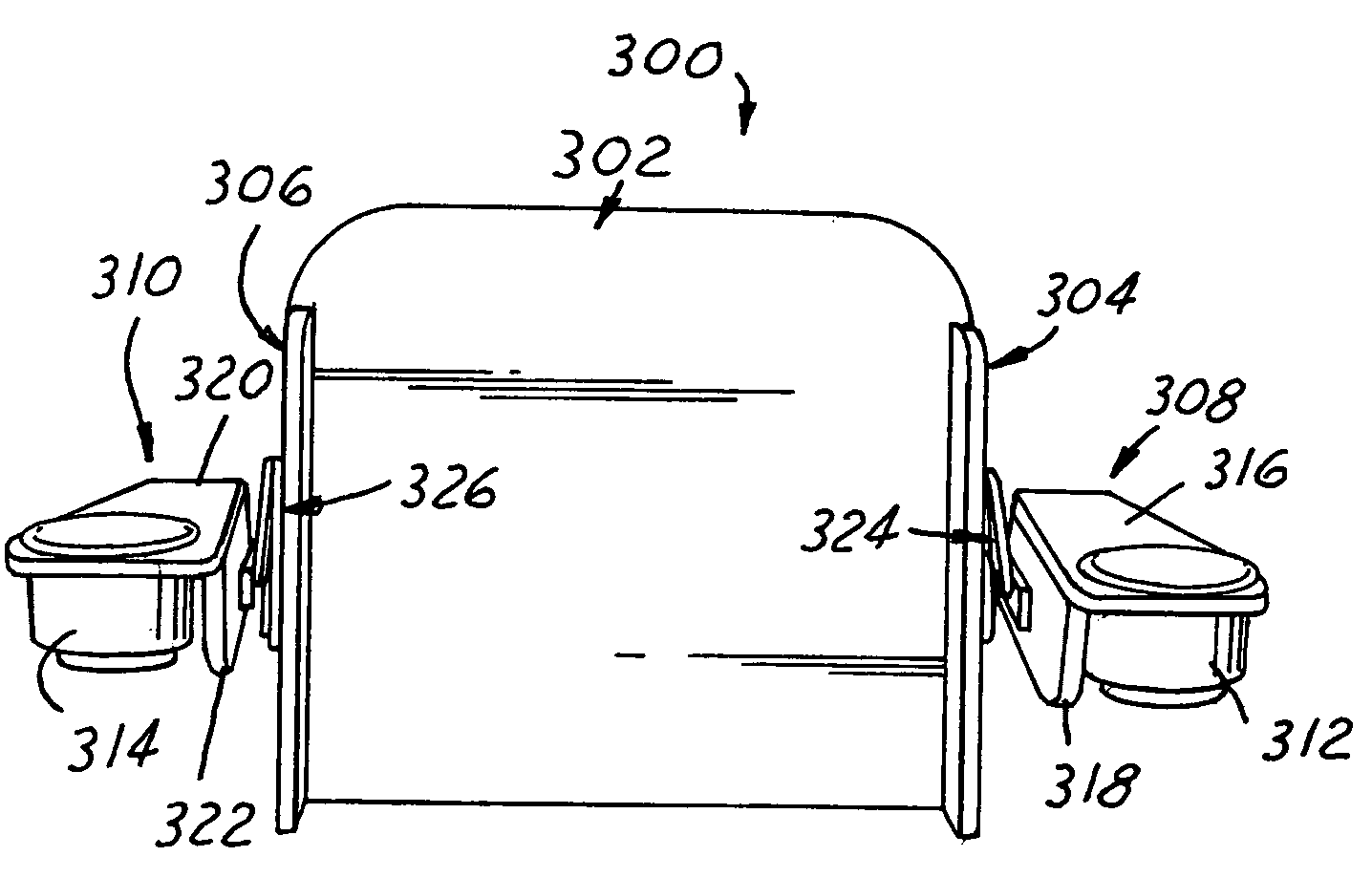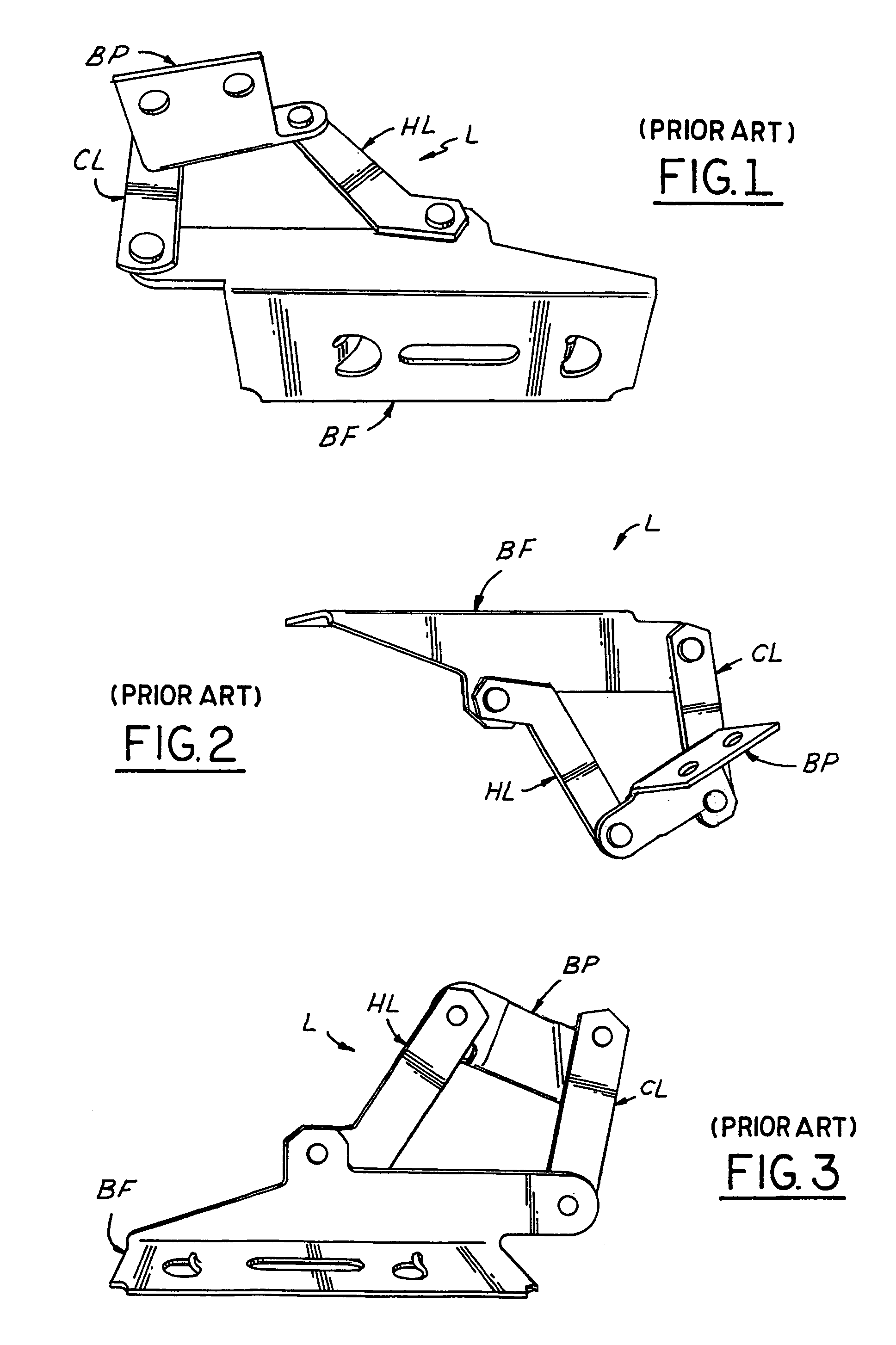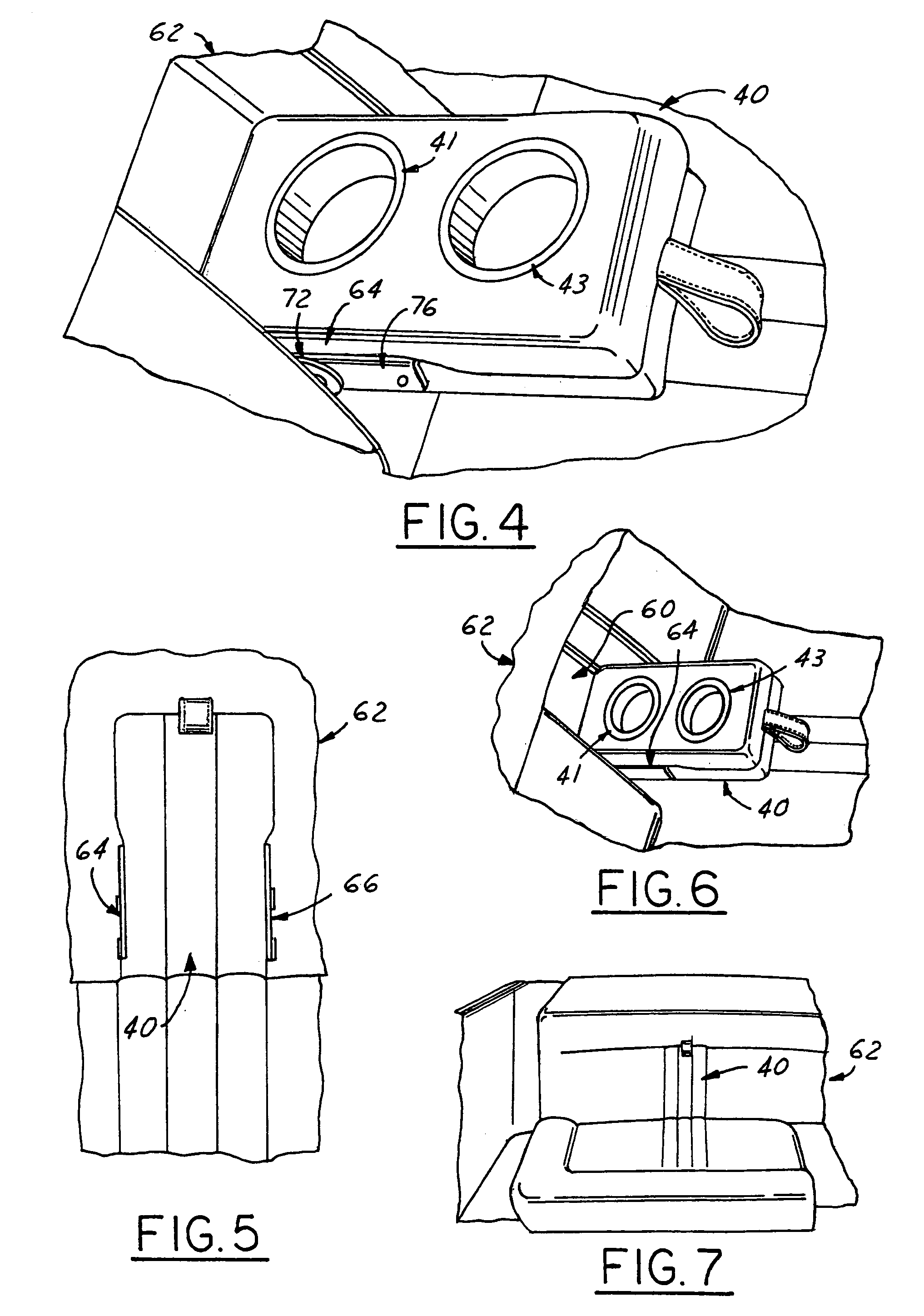Fold-up marine furniture component with articulated bracket support
a technology of marine furniture and bracket supports, which is applied in the direction of hinges, wing accessories, manufacturing tools, etc., can solve the problems of 1–3 being entirely unsuitable for marine environment applications, and achieve the effects of convenient pulling, strong and durable, and easy manipulation
- Summary
- Abstract
- Description
- Claims
- Application Information
AI Technical Summary
Benefits of technology
Problems solved by technology
Method used
Image
Examples
first embodiment
[0044]FIGS. 4–12 illustrate the first embodiment of a four-bar hinge assembly and fold-down support member in the form of an armrest in this embodiment as invented by the named inventor herein for marine use in watercraft seating applications, typically a powerboat of the speedboat or cabin cruiser type. The armrest 40 shown by way of example herein consists of a frame 50 (FIGS. 8 and 9) made up of a platform board 52 and two laterally spaced sideboards 54 and 56 dependent therefrom with their longitudinal dimension running parallel to that of platform 52 and being slightly inset from the lateral side edges 58 of board 52. Preferably the material of the platform 52 and sideboards 54 and 56 is an extruded polymer foam or the like and therefore not subject to the adverse influences of rot or corrosion.
[0045]Frame 50 is pivotally supported for four-bar hinge articulation from a stationary upright back panel board 60 of the boat bench seat or sofa 62 seen in FIGS. 4–7. This articulation...
second embodiment
[0062]A second embodiment of the four-bar armrest hinge assembly 140 of the invention is illustrated in FIGS. 13, 14 and 15, wherein the second embodiment hinge assembly 140 is shown oriented for mounting and use as the starboard one of the pair of hinge assemblies. The only difference between hinge assembly 140 and hinge assemblies 64, 66 is the substitution of an angle armrest mounting bracket 142, constructed as shown in detail in FIGS. 16-A and 16-B, for the straight bar armrest mounting bracket 76 of hinge assembly 64, 66. The remaining parts and operational layout relationship are identical and therefore like reference numerals are applied in their description not repeated. As best seen in FIGS. 13-A, 16-A and 16-B, armrest mounting bracket 142 comprises a standard angle extrusion made of aluminum preferably having a 1 inch wide flange 144 that is provided with three link pivot connecting holes 128, 126 and 130 dimensioned and spaced in the same relationship as these holes are...
third embodiment
[0065]As exemplified by a third embodiment of the present invention illustrated in FIGS. 21 through 32-F, it is possible and indeed readily feasible in accordance with the present invention, to scale up the armrest bracket mechanism of the foregoing second embodiment and also modify the mechanism so that it can be used for support articulation of a support member in the form of a pivotal boat seat assembly 198. In particular, as illustrated in FIGS. 21 and 23, this enlargement and modification of the four-bar hinge assembly of the invention is advantageously employed to make a pivotal seat that advantageously becomes a hidden seat mechanism 198. The thickness of the metal stock, i.e., the standard aluminum extrusions, is preferably increased from ⅛ inch to {fraction (3 / 16)} inch in order to carry the greater load of seating use. A boat seat has to withstand a 450 lb. static load at each seated position pursuant to ABYC H-31 standard. It is even possible that a seat bracket would hav...
PUM
 Login to View More
Login to View More Abstract
Description
Claims
Application Information
 Login to View More
Login to View More - R&D
- Intellectual Property
- Life Sciences
- Materials
- Tech Scout
- Unparalleled Data Quality
- Higher Quality Content
- 60% Fewer Hallucinations
Browse by: Latest US Patents, China's latest patents, Technical Efficacy Thesaurus, Application Domain, Technology Topic, Popular Technical Reports.
© 2025 PatSnap. All rights reserved.Legal|Privacy policy|Modern Slavery Act Transparency Statement|Sitemap|About US| Contact US: help@patsnap.com



